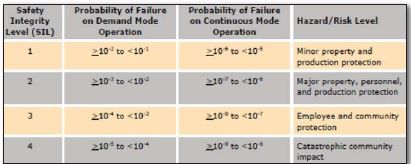Selecting Control Hardware
Whether buying a control system for new rotating equipment or retrofitting an older machine, plants have a number of control system choices. Equipment can be controlled with an existing Distributed Control System (DCS), a simplex controller or redundant and triple modular redundant (TMR) Programmable Logic Controller (PLC) architectures. When deciding which control technology to invest in, end users should identify their specific system and site needs, and then accept trade-offs between cost and system availability as relevant.
Consider this metaphor: When buying diamonds, a shopper can give and take in the realms of cut, clarity, carat weight to get the best stone for his or her budget. In the controller market, a plant should negotiate within the specifics of safety, cost, and availability to obtain the most reliable control system for the facility.
As reliability has a large effect on plant safety, end users should perform a hazard and operability (HAZOP) study—a structured analysis that evaluates the safety integrity level (SIL) of risk associated with existing operations. SILs, as defined by industry standards organizations, (IEC 61508, IEC 61511 and ANSI/ISA 84.01) estimate the probability of equipment failure on both demand and continuous operation. They range from SIL 1, which calls for minor property and production protection, to SIL 4, which requires catastrophic community protection (See Table 1 from the ARC Advisory Group.)

Table 1: Safety Integrity Levels[/caption]
In addition to safety, there may be financial factors to consider. The criticality of machine operations could drive an investment in a high-reliability system i.e., a unit that isn’t running because of a control system failure isn’t making money.
Availability is another factor to take into account. Some systems tolerate downtime better than others, so may not require as high an investment in reliability. For example, a boiler feed pump control system with a boiler that has a cross-tie to a backup source at an offsite steam boiler would pose minimal risk to profitability. If the feed pumps trip off line, the plant can buy steam from the backup until they can get the control system, feed pump and boiler back on line. Similarly, a system controlling storage tanks might also be able to tolerate more downtime. If a site has 500,000 gallons of demineralized water in storage, losing temporary access is tolerable.
Based on an assessment of reliability requirements against safety, economics and availability, an end user is ready to look at the different control system options available.
If extremely high availability is not required for safety or economic reasons and an existing distributed control system is available, using the DCS as a rotating equipment controller could be a cost-effective option. This simplifies implementation and minimizes impact and cost in terms of training and spare parts. Since all communication is internal to the DCS itself, no external interfaces are required. On the downside, scan rates may be not be fast enough for some applications and some DCS lack redundancy features.
A simple PLC architecture dedicated to the rotating equipment can be a cost-effective option when high availability is not critical. This approach can be used as a standard platform throughout the plant, controlling many machines and processes. Standardizing on a single control system hardware platform can also lower overall costs for spare parts, training and maintenance. Another advantage of this option is ease of integration. Virtually all systems of this type are capable of passing data to other systems over one or more common protocols, such as Modbus TCP/IP, which makes integration with other systems fairly easy and straightforward.
On the other hand, a dedicated PLC requires dedicated support equipment, such as power feeds and field power supplies. Further, a single failure can render the control system inoperative, forcing the machine offline.
Redundant PLC architectures dedicated to the rotating equipment can increase availability in plants where reliability is more critical. They do well at withstanding a single failure and can often be repaired while remaining on line. This increases the overall reliability and availability of the application. Redundant PLC architectures can provide high levels of redundancy, although a greater level of financial investment is needed.
But this level of redundancy may not be enough for some applications. TMR is more commonly implemented for emergency shutdown systems (ESD), for example. These systems can withstand multiple failures and remain online, and most can be repaired while online. The biggest drawback associated with TMR systems is cost, though pricing has become competitive recently.
OEM v third-party
In addition to determining which type of system, users must also decide how to obtain control system hardware and support. The big advantage of working with an OEM is that they are familiar with their machines, and they are in a unique position to know exactly what is required of the control system. For retrofits on an existing OEM-provided system, the OEM has intimate knowledge of the legacy system’s control strategy. On the downside, though, the user may have limited input into the hardware technology being used as regards factors such as the level of built-in redundancy.
With a third party, however, the focus is on the control system itself as opposed to the complete system. Third party vendors often have the know-how to integrate machinery from various OEMs into a single system. This can be an important consideration in plants that have installed hardware from many providers over the years.
Bottom line: Downtime adds up. If machines are not running properly, safety is compromised and plants stand to lose production and profitability. Selecting reliable control system hardware minimizes spurious trips and downtime, and enables online preventative and corrective maintenance. A careful analysis of risk and risk tolerance in the context of business strategy and operating requirements will guide plants in determining the right level of investment.